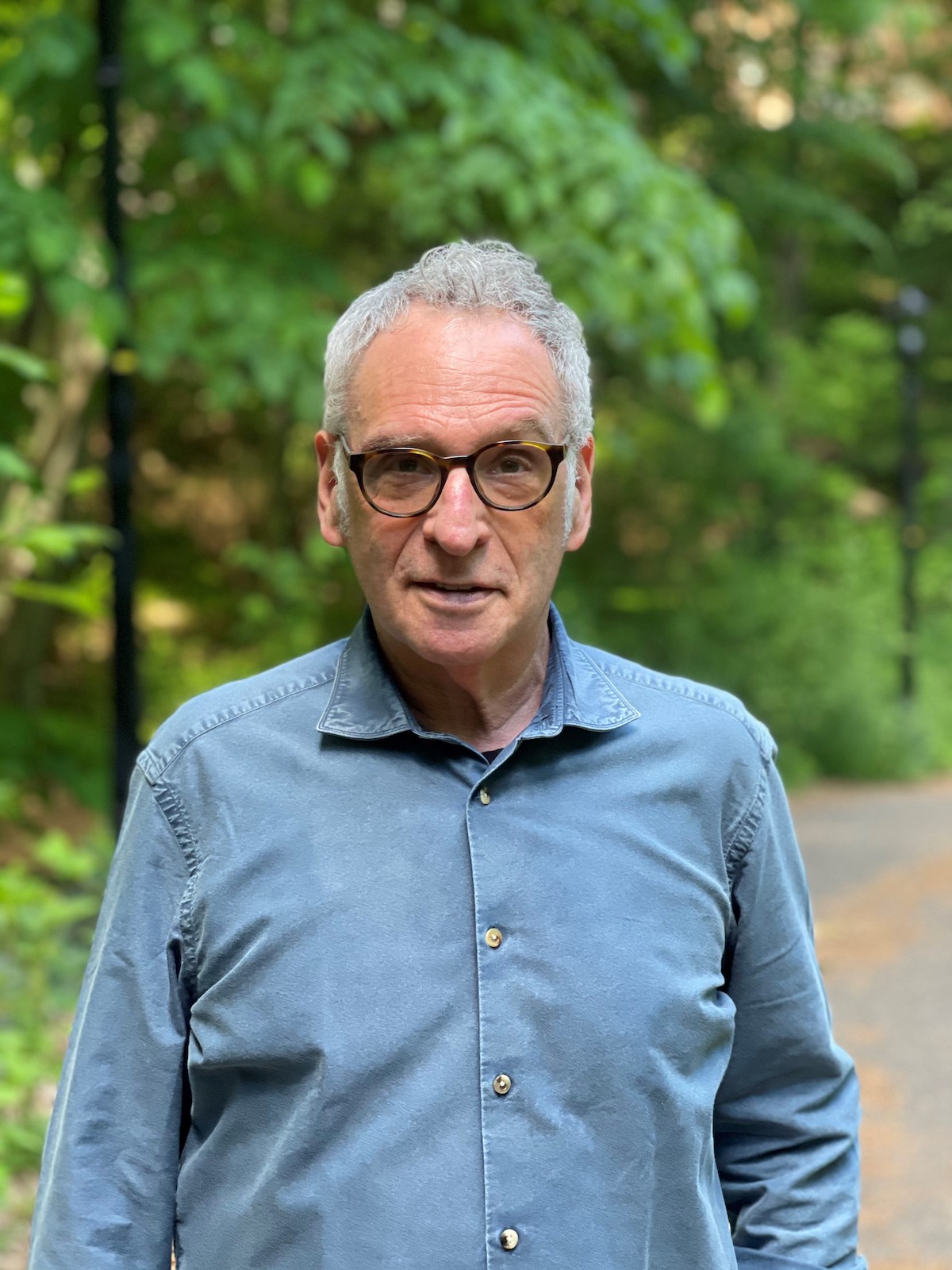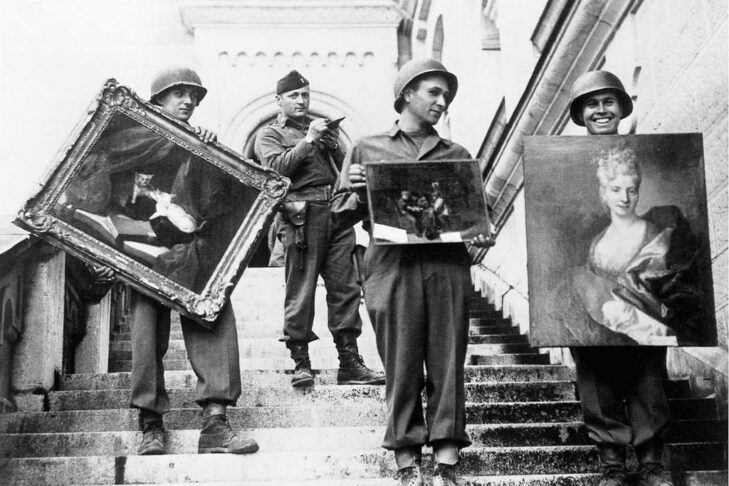When Pablo Picasso wanted to speak with the art dealer who represented him—Paul Rosenberg—in early 20th-century Paris, he didn’t have to go very far. They were next-door neighbors who conversed through their windows, sometimes setting it up with a phone call. Artist and dealer knew each other as “Pic” and “Rosie,” respectively.
This reflects the significant role of Jewish art dealers and collectors in the art world for decades before everything shattered during World War II and the Holocaust, with the Nazis looting Jewish art collections or compelling their owners to sell under duress; restitution efforts are ongoing. This narrative is shared in a new book, “Belonging and Betrayal: How Jews Made the Art World Modern,” by Boston University history professor Charles Dellheim.

“The real impetus to write the book came out of my curiosity about Nazi-stolen art,” Dellheim explained. “I certainly found this story extraordinarily compelling. At the same time, I was struck by the fact there was so little attention to the dealers and collectors themselves.”
In addition to Rosenberg, Picasso’s previous dealers were also Jews—including Rosenberg’s brother Léonce Rosenberg, whom Dellheim calls one of his favorite characters in the book. A World War I veteran, Léonce used military terms like “avant-garde” in correspondence to the artists he represented. He left the family art business after quarreling with his brother and started his own gallery that focused on modern artists like Picasso.
By then, whether it was in modern art, old masters or both, Jews had become quite successful as dealers and collectors while battling outsider status and antisemitism—all chronicled in Dellheim’s 600-plus-page tour de force, well-illustrated with paintings that its cast of characters collected and sold—including what he calls the most famous example of art with a disputed provenance, the 1907 “Portrait of Adele Bloch-Bauer I” by Gustav Klimt.
As Dellheim asks, “How did these Jewish outsiders acquire so much great old masters’ art in the first place and come to play a pivotal role in European culture? How did they become the most prominent champions of modern art? What does this tell us about the Jewish encounter with modernity?”
The book opens with one such encounter in late-19th-century Alsace, France. A horse dealer named Nathan Wildenstein received an unexpected request from a neighbor. She had a painting to sell and asked if he would sell it for her.
“He had a lot of chutzpah and not a lot of money,” Dellheim said. “He said yes. He knew nothing about art.”
Many of the fellow Jews who joined Wildenstein in entering the art world also lacked formal training and came from seemingly unrelated fields. Ernest Gimpel sold commodities and had a seat on the French stock exchange, the Bourse. The Duveen brothers, who relocated from the Netherlands to England, had family roots in selling textiles, iron foundries and vegetable produce. In New York City, dry goods dealer Benjamin Altman built a fortune—and an art collection—thanks to the department store he founded.
“[To] be a successful art dealer, you have to be more than a good salesman,” Dellheim noted. “It’s not a commodity like rice or grain … [You have to know] what makes a Rembrandt a Rembrandt, a Titian a Titian.”
As they built up their knowledge, Jewish art dealers and collectors found a new clientele—wealthy Americans inquiring whether the artwork they wished to purchase was authentic. Bernhard Berenson, an Eastern European Jewish immigrant to Boston, became quite good at this. Prominent Bostonian Isabella Stewart Gardner relied on his expert eyes in selecting paintings for what became her namesake museum.
“Berenson became the great connoisseur of his age,” Dellheim said.
The age also witnessed the rise of something much different than the masterpieces of the past—modern art. Here, again, Jews played a significant role.

“Some of the reasons Jews became involved in modern art are sociological,” Dellheim said. “Jews tended to gravitate to new and rapidly expanding fields or endeavors, commercial or cultural, with limited barriers to entry and a capacity to rise … [with] established hierarchies yet to form.”
An insurmountable barrier appeared, however, with the Nazi takeover of Germany. Dellheim chronicles the rise of Nazi antisemitism, including an infamous exhibition of “degenerate art” and German Jews’ loss of position in the art world. Then World War II broke out.
Paul Rosenberg, who had tried to conceal his art in various places across France, fled to Portugal. According to Dellheim, when his family escaped to the U.S., it was likely in part through another Massachusetts connection—Paul Sachs, then the head of the Fogg Art Museum at Harvard University.
Léonce, meanwhile, stayed with his own family in Paris as the Nazi occupation dismantled Jewish rights.
“There is danger everywhere, there is insecurity everywhere,” Dellheim said. “As best I could, I tried to capture this from the point of view of the participants. In some cases, there were letters, in others there is diary evidence.”
There are also primary sources that reveal the extent of Nazi looting, including from the Nazis themselves, who catalogued the works they stole. Meanwhile, an artist and art historian named Rose Valland joined the resistance and bravely and secretly documented the looting, including by Marshall Hermann Goering, while the Monuments Men sought to recover stolen works.
“The whole issue of restitution is darkly fascinating,” Dellheim said. “The late 1990s were focused on restitution of stolen works with murky provenance.”
Dellheim cited a 1997 example from the Museum of Fine Arts, Boston, in which a Monet painting of water lilies from 1904 was planned for an exhibit before its provenance was disputed.
“I would assume, over time, that new cases and controversies would basically just fade away and subside by now,” he said. “In fact, there are new revelations and disputes.”
Today, Dellheim said, “most of the survivors are gone by now. We are talking about children, about grandchildren, nieces or nephews, their heirs.” Yet, he said, “there is much better information about the whereabouts, provenance, history, of stolen art now than there ever was.”



